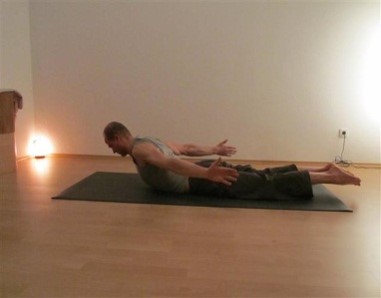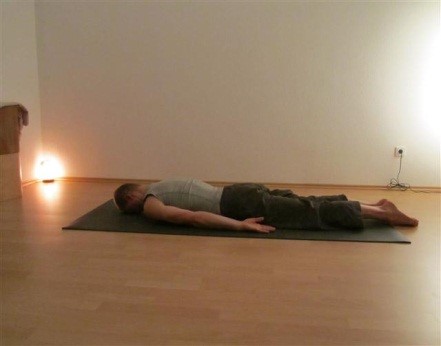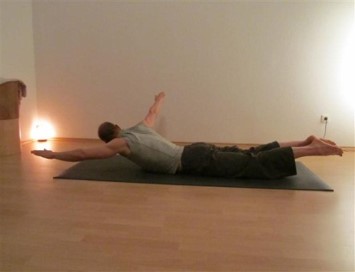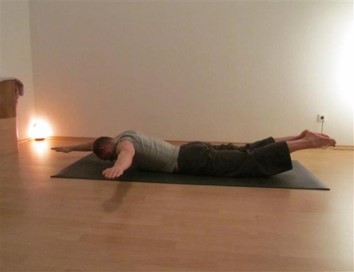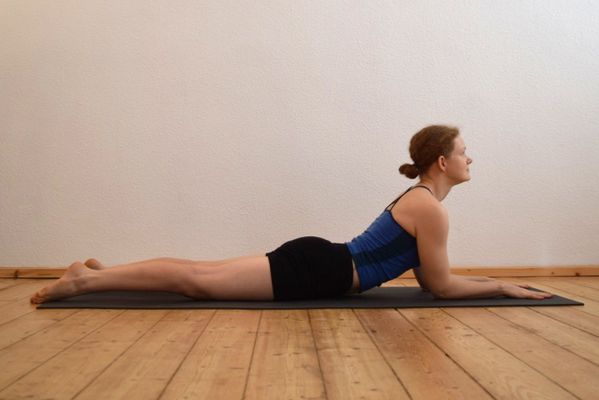Cliff Jumper
Lay with your belly on the floor. Forehead and backs of your hand touch the floor.
Now on the inhale lift up your stretched out legs off of the floor including your knees, your head and your outward rotated arms. Make sure the neck stays long.
On the exhale return back to the starting position and repeat this movement with a slow breathing rhythm until you feel a comfortable fatigue in the back muscles.
Effekt
Especially after loosening up the general back muscles (e.g Cat / Minka Sequence) the strengthening of the thoracic spine is an important building block for the health of the back.
Single winged locust
Starting again from the beginning position laying on the belly reach your left arm past the ear to the front the right arm 90 degrees to the side. Lift your legs, head and arms slightly off the floor.
With your inhalation gaze at the right hand. Now lift them up even further and rotate out of your thoracic spine upward.
Lower down on the exhale without touching the floor with the head, legs or arms. Move your arms windmill like to the other side. From here the same rotating lift starts to the other side on the inhalation. Follow your slow breathing rhythm until you feel the effort in the area of the thoracic spine.
Effect
With this exercise a strengthened in the area of the thoracic spine is achieved as well as rotating mobilization.
Falkor
Still on your belly interlace your fingers behind the back of your head. Now inhaling lift off the back of your head and your stretched legs including your knees of the floor.
Option 1: Inhaling move your upper body to the right and exhaling back to the middle. With your next inhale turn to the right. Wind yourself as much as possible like a flying snake (or better said like Falkor the luck-dragon) with a lifted upper body back and forth until your back muscles signal you good activity.
Option 2: Inhaling lift your right elbow and allow the rotation of your thoracic spine. Exhaling lower both elbows to the same level. Follow with your inhalation the rotation to the left. Continue this motion until the back is warm and exerted.
Effect
Mobilization and strengthening at the same time of the thoracic spine. This exercise is very suitable for stiffening diseases of the thoracic spine like M. Bechterew. (Ankylosing spondylitis) The hands behind the neck aids it to stay long and ensure the correct execution of the back band in the thoracic spine. That is particularly important with a rounded back ( e. g. condition after M. Scheuermann)
Sphinx
Still laying on your belly come to your forearms and lift your shoulders off the floor. Try to create the back bend out of your thoracic spine and to keep your neck neutral. Gently rock and rotate the spine to lengthen it and to create a beck bending mobilization out of the thoracic spine.
Stay here relaxed for a few minutes. Observe how your back becomes longer by itself following gravity.
Effect
This exercise is a perfect passive way to loosen and mobilize the thoracic spine.

